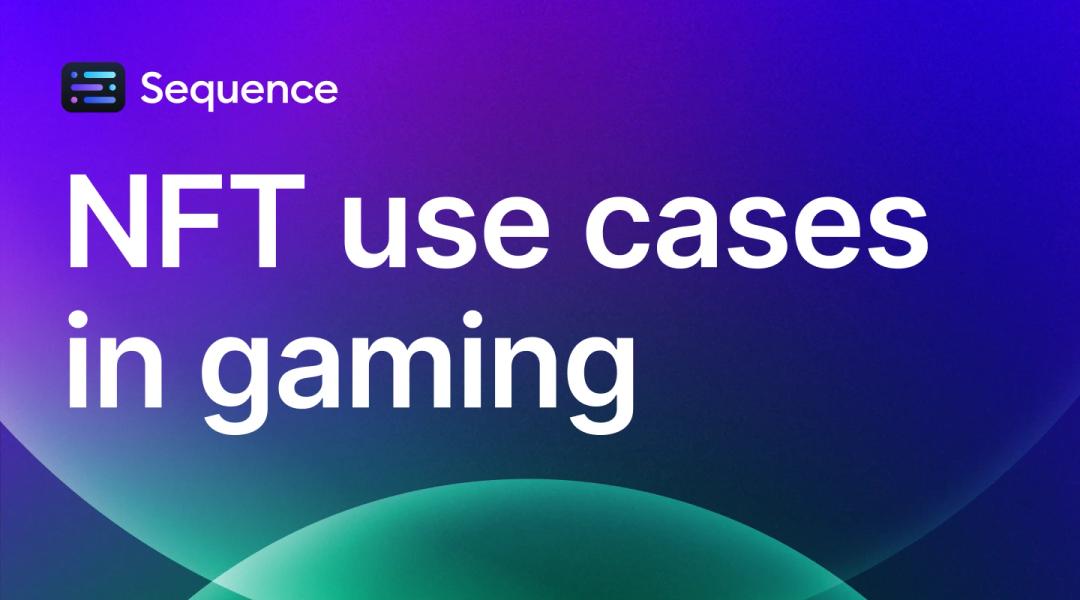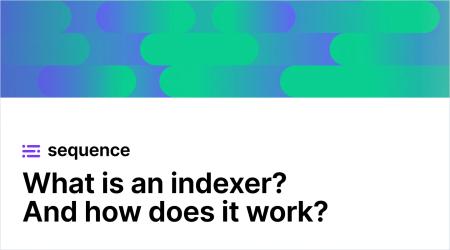NFT use cases in gaming
December 16 2024

NFTs (Non-Fungible Tokens) have opened up a world of possibilities in the gaming industry, offering game developers powerful tools to enhance player experiences and introduce new mechanics. While NFTs are often associated with collectible items and digital art, their application in gaming goes far beyond that.
In gaming, NFTs can represent a variety of assets and functions, from in-game items that players truly own to token-gated access for exclusive content. Developers can use NFTs to create deeper, more meaningful interactions with players, fostering engagement through unique rewards, governance tools, and achievements that live on the blockchain.
In this post, we’ll explore a range of NFT use cases in blockchain gaming, from traditional item ownership to more creative implementations like character customization and progression tracking. By the end, game developers will have a clearer understanding of how NFTs can be harnessed to drive innovation and enhance the gaming experience.
Key takeaways
- NFTs in gaming allow players to own and trade in-game assets across platforms.
- Token-gated access via NFTs grants players exclusive access to game content or features.
- Soulbound NFTs provide non-transferable achievements as permanent records of player accomplishments.
- NFTs enable full player ownership and customization of characters or avatars.
- In-game real estate NFTs allow players to buy, sell, and develop virtual land within game worlds.
- Governance NFTs give players a voice in game development decisions through decentralized voting.
- NFTs can be used as digital licenses, granting ownership and access rights to play games.
What are NFTs in gaming?
NFTs are unique digital assets stored on the blockchain. Unlike cryptocurrencies such as Bitcoin or Ethereum, which are interchangeable, NFTs represent one-of-a-kind items or assets. In gaming, NFTs have a wide range of uses, typically as in-game assets that players can truly own, trade, or sell.
When applied to gaming, NFTs allow players to own digital items such as weapons, skins, characters, or even pieces of the game world itself. These assets are stored on a decentralized blockchain, giving players proof of ownership and the ability to transfer their assets between games or trade them in secondary marketplaces. This level of ownership marks a fundamental shift from traditional games, where in-game items are controlled and stored within the game’s servers and cannot be transferred or sold outside the game’s ecosystem.
By integrating NFTs, game developers can create more transparent and player-driven economies, where digital assets hold real value and can exist beyond the confines of a single game or platform.
Key NFT use cases for game developers
As NFTs become more integrated into gaming, developers are discovering a wide array of potential use cases that go beyond traditional in-game assets. Here are some of the most exciting ways NFTs are being used in game development today:
1. In-game item ownership
One of the most common uses of NFTs in gaming is to represent in-game items such as weapons, skins, armor, or other assets. Unlike traditional digital items, NFTs allow players to truly own these assets, meaning they can trade, sell, or even take them to other games that support NFT interoperability. This creates a new dynamic in gaming, where items can have real-world value and players can benefit from their virtual collections outside of the game.
2. Token-gated access
NFTs can also be used to grant exclusive access to specific game content, events, or even entire games. Developers can issue NFTs as tokens that unlock different areas, experiences, or special features within a game. For example, owning a specific NFT could grant access to a VIP-only area of the game, exclusive missions, or early releases of new content. This token-gating mechanic not only adds value to NFTs but also gives developers a new way to reward loyal or engaged players.
3. Soulbound NFTs for achievements
Soulbound NFTs are non-transferable tokens that can be used to represent in-game achievements, titles, or badges of honor that players earn through gameplay. Since these NFTs cannot be sold or transferred, they act as a permanent record of a player’s accomplishments. This is especially appealing for competitive players who want to show off their in-game milestones and progress, knowing that their achievements are unique and verifiable on the blockchain.
4. Character customization
NFTs can also represent player-owned characters, avatars, or skins. Developers can create unique, customizable characters that players can modify, trade, or even sell in secondary NFT marketplaces (see here an example). This means a player’s avatar or character can evolve throughout the game, and the player retains full ownership. In some cases, these characters can be transferred across different games, giving players the opportunity to build cross-game personas.
5. In-game real estate and world-building
In some blockchain-based games, players can own virtual real estate as NFTs. This could be plots of land, buildings, or other structures within the game world. Players are able to buy, sell, or develop these spaces, often building communities or creating in-game economies. This ownership model not only offers new gameplay mechanics but also creates potential revenue streams for both players and developers as the value of virtual land increases based on demand.
6. Progression tracking and achievements
NFTs can also be used to track player progression over time, with each achievement, level, or milestone represented as an NFT. This enables players to build a verifiable collection of their accomplishments, which could be shared or displayed to others. For example, a player could own NFTs representing their first victory in a game, completing difficult challenges, or reaching top rankings on leaderboards. This adds a new layer of engagement and prestige for players who want to showcase their skills and history.
7. Governance with NFTs
NFTs can also be used to give players governance power in a game’s ecosystem, enabling them to influence decisions around game development or updates. For example, developers can issue governance NFTs that represent voting rights, allowing players to participate in decisions about future content, updates, or even rule changes within the game. This decentralized approach empowers players to take an active role in shaping the games they love, fostering a greater sense of community and engagement.
These governance NFTs could be earned through in-game achievements, purchased, or distributed as rewards for early supporters of the game. By granting players a say in the direction of the game, developers can create a more player-driven, community-centric experience.
8. NFTs for ownership of game access
NFTs can be used as digital keys or licenses to access a game, offering a decentralized alternative to traditional digital game ownership models like those used by platforms such as Steam. These NFTs can represent the right to play a game, which can be bought, sold, or transferred between players. Unlike current digital game purchases that are locked to a specific platform or account, NFT-based game access can give players true ownership of their game licenses, enabling them to trade or resell the game if they choose.
This use of NFTs also introduces new possibilities for limited edition releases, where developers could issue a finite number of NFTs that grant access to exclusive or early versions of a game. This opens up new opportunities for monetization and player engagement while giving gamers greater flexibility in managing their digital game collections.
Challenges and considerations
While NFTs open up new opportunities in gaming, they also come with certain challenges that game developers must consider before integrating them into their projects.
1. Technical complexity
One of the main hurdles for game developers is the technical complexity of implementing NFTs. Working with blockchain technology requires a new skill set, and integrating NFTs into a game’s economy and mechanics can be a daunting task for teams unfamiliar with smart contracts, token standards, and decentralized infrastructures. Developers need to ensure that their game remains accessible and user-friendly, even with the added complexity of blockchain features. However, Sequence’s stack for web3 gaming makes integration extremely easy and seamless, allowing developers to focus on building their game without the heavy technical burden.
2. Player perception
Although NFTs can enhance player experience, there is still skepticism among some players regarding the commercialization of gaming through NFTs. Some players see the integration of NFTs as a potential “cash grab” or as something that could harm the balance of a game’s economy. It’s important for developers to focus on creating genuine value and utility with NFTs, rather than using them solely for profit. Transparent communication with players about the benefits of NFTs will be key to building trust and engagement.
NFTs offer game developers a unique opportunity to revolutionize the gaming experience. Beyond the traditional use of in-game item ownership, NFTs can be used to create token-gated experiences, reward players with non-transferable Soulbound tokens, and even represent characters, in-game real estate, or player progression. By incorporating NFTs, developers can build more engaging, player-driven web3 ecosystems where digital assets hold real-world value and ownership becomes more meaningful.
However, as exciting as these innovations are, game developers must be mindful of the challenges that come with implementing NFTs. Technical complexity can present barriers for teams unfamiliar with blockchain, and player perception is another critical factor that must be addressed carefully to ensure the success of any NFT integration.
For game developers looking to explore the future of NFTs in gaming, understanding their potential and being strategic in how they are applied will be key to creating a balanced and rewarding experience for players.
Looking to integrate NFTs into your game? Sequence’s web3 game development platform supports all the NFT use cases we’ve discussed, from in-game items to Soulbound tokens and governance tools. Whether you need token gating, validation of ownership, or automated reward systems, Sequence offers seamless deployment and management solutions.
Sequence makes building onchain simple. Developers and teams can launch, grow, and monetize apps with unified wallets, 1-click cross-chain transactions, and real-time data, all in a modular and secure stack. No more stitching together fragmented tools or battling poor user flows. Sequence is production-ready infrastructure that helps teams ship faster, onboard more users, and scale confidently. From chains and stablecoins to DeFi and gaming, Sequence powers developers and applications across the EVM ecosystem with billions in transaction volume and millions of users. Trusted by leaders in blockchain, Sequence powers today’s onchain apps and delivers future-proof infrastructure for tomorrow’s breakthroughs. Learn more at sequence.xyz.
Written by

Sequence team
Sequence logoRelated Posts

A short guide that explains exactly what gasless transactions are, and why they matter for your web3 experience.

In partnership with KOR Protocol, Sequence and Msquared, Black Mirror's franchise has launched the $MIRROR token and a new web3 experience!

Web3 payment flows allow any app to embed onchain purchases and interactions in a way that feels natural for users. Learn more about them!

As more applications and protocols move onchain, indexers redefine how dev teams access, organize, and use blockchain data. Learn how!


